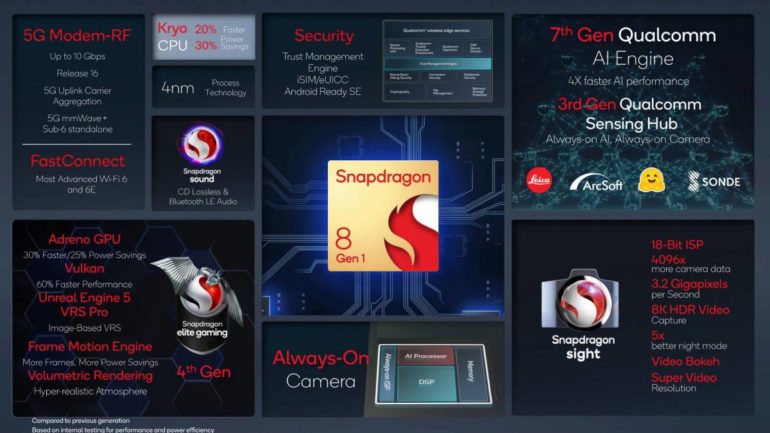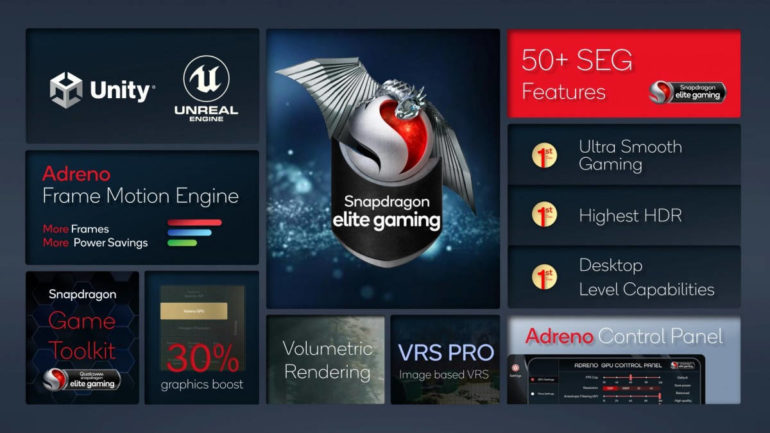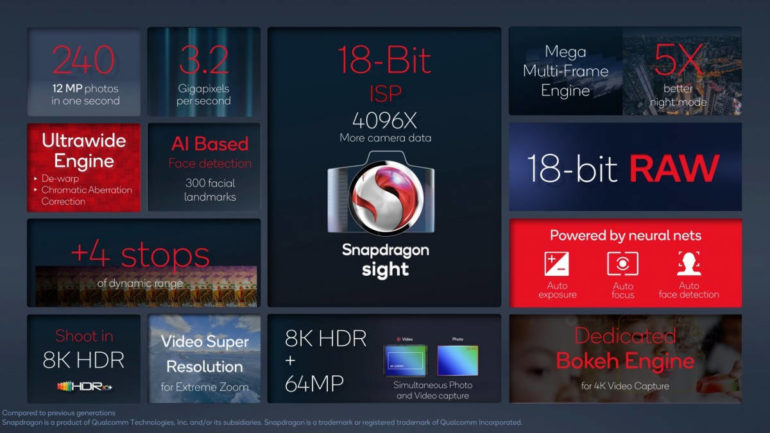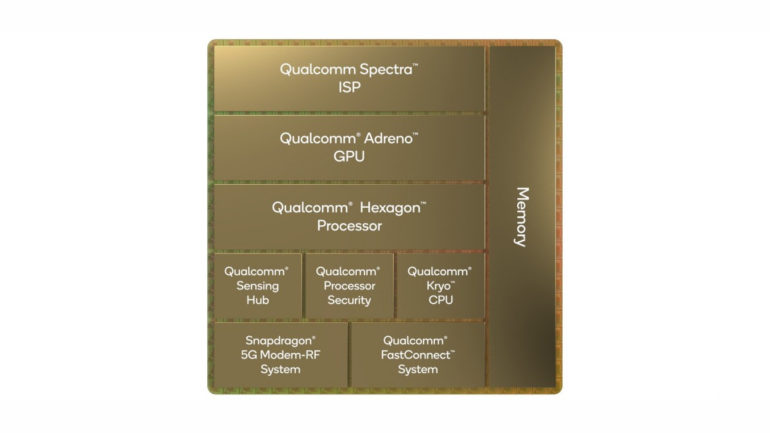
Qualcomm has just introduced its latest flagship chipset – the Snapdragon 8 Gen 1 at the Qualcomm Snapdragon Tech Summit 2021. If the name looks pretty unusual, the company recently announced its updated naming scheme with a number for the class [Yes, 8 is the flagship class] and its generation number.
Despite the name change, the Snapdragon 8 Gen 1 looks to continue the legacy of the Snapdragon 888 as an impressive chipset for flagship devices with upgrades across the board.
The first notable change is that the new flagship chipset is the company’s first chipset built on the 4nm process. The smaller process is said to offer better overall performance and power efficiency compared to the 5nm process of the Snapdragon 888.
CPU and AI
As far as cores go, it retains the 1+3+4 cluster but the cores are now based on the ARMv9 design. It features a Cortex-X2 prime core clocked at 3.0GHz. The prime core is accompanied by three performance Cortex-A710 cores running at 2.5GHz along with four efficiency Cortex-A510 cores at 1.8GHz.
The CPU performance is said to be 20% faster than the Snapdragon 888 and 30% more power-efficient.
The chipset also features a 7th generation Qualcomm AI Engine with a Qualcomm Hexagon processor. This is said to feature two times faster tensor acceleration and two times larger shared memory than its predecessor.
GPU
The new Adreno GPU is based on a new architecture that offers 30% better performance and up to 25% more power-efficient.
It also features the Adreno Frame Motion Engine that allows the GPU to double the frame rate rendering of games while drawing half the power. It is also capable of keeping the same FPS with half the amount of power.
It also features desktop-level volumetric lighting along with Variable Rate Shading Pro. The latter is an image-based VRS that streamlines the integration of VRS into more games.
Additionally, it supports up to a 4K display at 60Hz refresh rate or QHD+ display with a 144Hz refresh rate.
ISP
One of the notable improvements that the new flagship SoC introduces is the new Snapdragon Sight ISP.
The new ISP now processes 3.2 gigapixels per second from the 2.7 gigapixels per second on the Snapdragon 888. This means, when paired with a 108MP sensor, it can capture full-resolution photos 30 times per second. If there are three cameras, it can do 3 x 36MP at 30 shots per second.
The new ISP also works at 18 bits per channel from 14 bits. This offers an improved 4 stops dynamic range and better HDR handling.
It also supports 8K video at 30fps complete with HDR, both HDR10 and HDR10+, support. The ISP can even do Electronic Image Stabilization at the same time or take 64MP photos while recording 8K/30 video. The hardware engine is also capable of rendering bokeh in up to 4K videos.
Snapdragon Sight also has a Mega Multi-Frame Engine that merges up to 30 frames into a single frame up from 6 frames. This should drastically improve night mode in devices. Moreover, there’s Video Super-Resolution that improves the quality of digital zoom.
Additionally, it has AI face detection that improves speed and accuracy. It tracks 300 facial landmarks like lips and eyebrows which should assist in the animation of 3D animoji avatars.
Connectivity and Security
Lastly, the new Snapdragon flagship is equipped with the 4th generation Snapdragon X65 5G Modem-RF system. The new modem supports both sub-6 and mmWave bands which are said to offer peak speeds of 10Gbps.
The modem also supports both Wi-Fi 6 and 6E support as well as Bluetooth 5.2, Bluetooth LE and LE Audio.
The security has also been improved with the introduction of the Trust Management Engine (TME). The engine will sit below the hypervisor which allows it to be secure even if the zones above it are compromised.
Qualcomm has announced that we can expect to see the Snapdragon 8 Gen 1-powered devices as early as the end of 2021. Currently, the realme GT 2 Pro and Xiaomi 12 are confirmed to be feature the Snapdragon 8 Gen 1.
Sources 1, 2, 3 | Featured Image
The post Qualcomm Unveils 4nm Snapdragon 8 Gen 1 SoC appeared first on Gadget Pilipinas | Tech News, Reviews, Benchmarks and Build Guides.
Source: Gadget Pilipinas





0 Comments